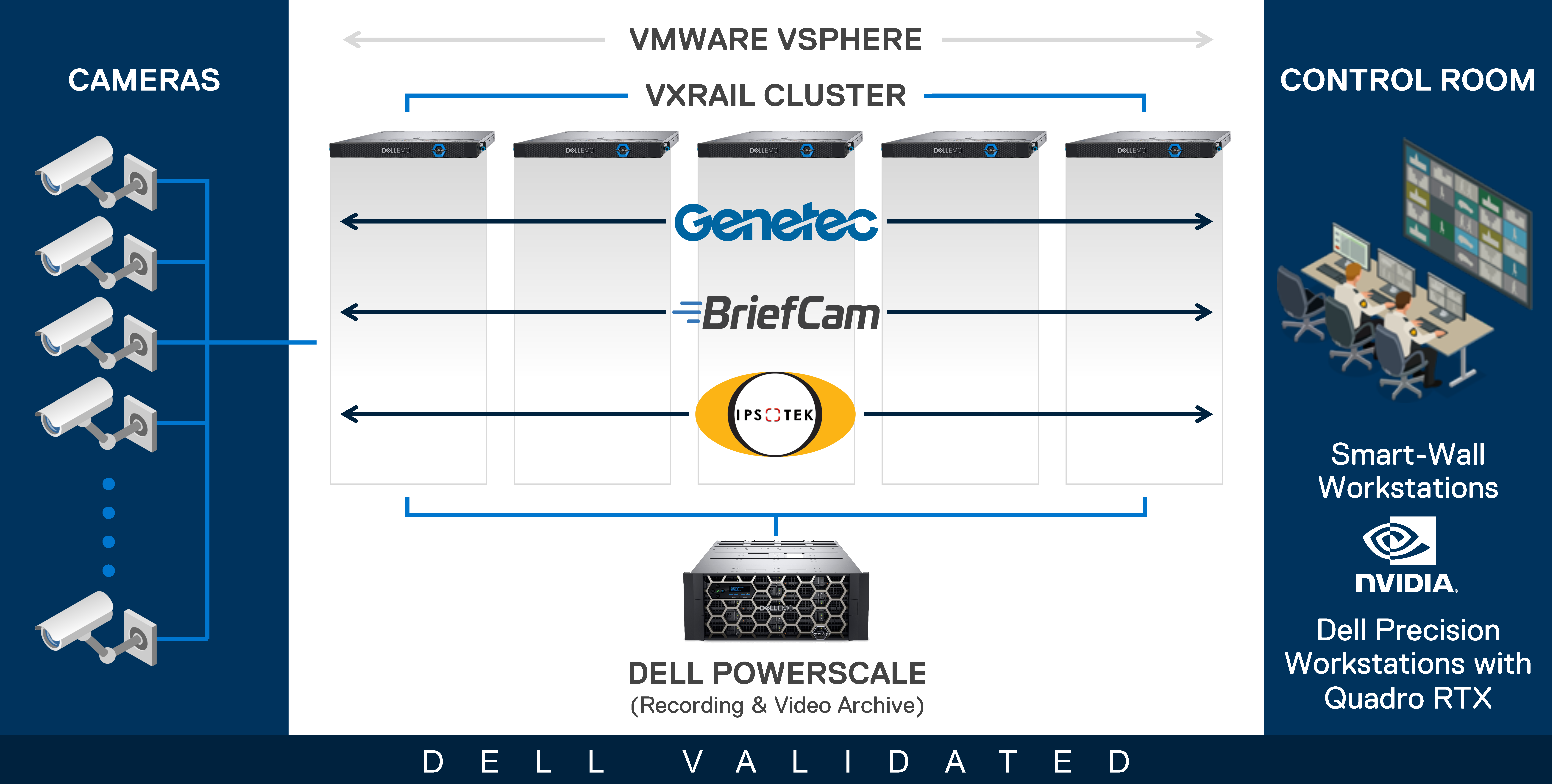Compute
In order to meet the requirements for performance, maintainability, and horizontal scalability, the solution is built using a VxRail V670F 5-node cluster. This V Series VxRail is a 2U platform with Nvidia GPU support. It is also configured with all flash drives for optimal performance. The full specification is available here. The design testing was performed with 3 nodes that were dedicated to video processing while running three market-leading applications simultaneously. Genetec provided the VMS functionality for our solution and Ipsotek and BriefCam provided the CV functionality products. The fourth node from the cluster was reserved for failover testing, and the fifth node was held out of testing in case we needed to migrate elements of the solution to prevent resource exhaustion on the three application nodes. In a production environment, the initial placement of the workloads would be spread more evenly across all available nodes.
The base Hardware specs are as follows:
| CPU | 2 x Intel(R) Xeon(R) Gold 6354 CPU @ 3.00 GHz (72 vCPU) |
| Memory | 512 GB |
| Storage |
|
| GPU | 2 x A40 48 GB Nvidia GPU |
Network
The following table describes the networks that are configured as part of the validated design:
| Network | Description |
| vSphere Management | Used by ESXi for host management. |
| vMotion | Used by ESXi for vMotion. |
| vSAN | Used by ESXi for vSAN traffic. |
| User | Used for user access to applications running on the VxRail. |
| Camera | The camera network isolates camera traffic so only specific applications receive video streams. |
| Storage | To optimize performance, application access to data storage is gained using a storage-only network. |
By configuring separate networks for the different traffic types, we get an additional layer of security and performance improvements.
Storage
- VMware vSAN
- Dell PowerScale
vSAN for VM local disks
The Dell VxRail cluster was configured with vSAN datastores that are available for local disk mapping by all the VMs running on the cluster. The vSAN storage was configured with a RAID 1 storage policy to provide fault tolerance for all the applications writing to vSAN storage. This protection level uses more disk space but provides better performance when accessing files.
The vSAN storage was used for all disks needed by Genetec, Ipsotek, and BriefCam VMs including the operating system and any local file locations. This includes all processing and management VMs needed by each of the software solutions.
PowerScale for bulk video stream archive
Dell PowerScale is used to store large volumes of video data that must be safely retained based on the needs of the customer. An A2000 PowerScale appliance was used in this design for the video stream archive. Shares on the PowerScale A2000 were set up as Continuous Availability (CA) shares. The SMB network protocol is used between the Genetec Security Center and the PowerScale A2000. File shares are defined as CA shares and use the SMB3 Witness protocol. The witness protocol enhances client failover for SMB3 CA shares. Witness notifies the Expansion Server when a PowerScale node becomes unavailable without the need to wait for the SMB3 connection time out. Other PowerScale models including the A3000 can be used with this solution. This storage is also responsible for responding to requests for retrieving historic video data for analysis by CV applications.
For more information about Dell storage options with Genetec, see Configuration Best Practices-Dell EMC storage solution with Genetec Security Center.
Architecture
The high-level architecture is as follows:

This design augments the HA support provided by each application by placing selected VMs and services for each vendor across the cluster. Some components of a complete VMS and CV solution, such as the cameras and Control Room shown the previous image are not described in this design document, but can easily be integrated with the solution.
